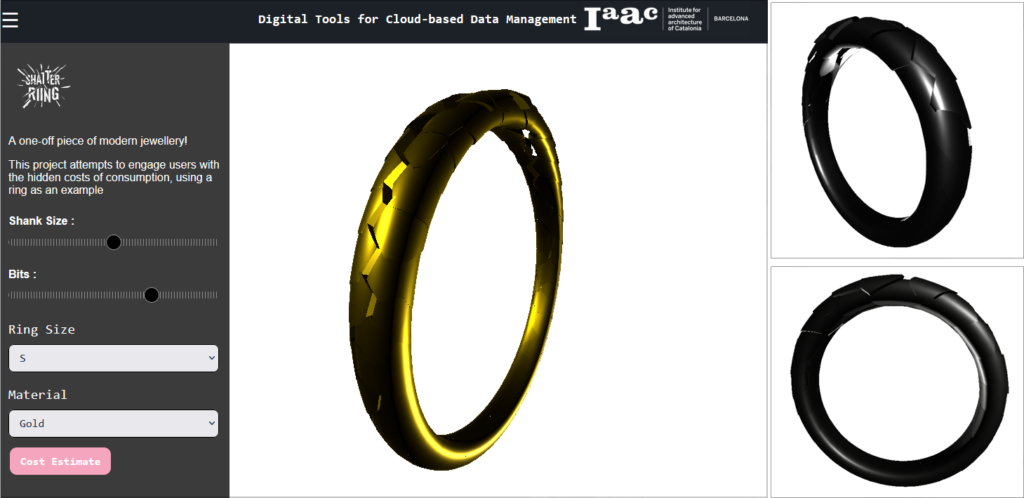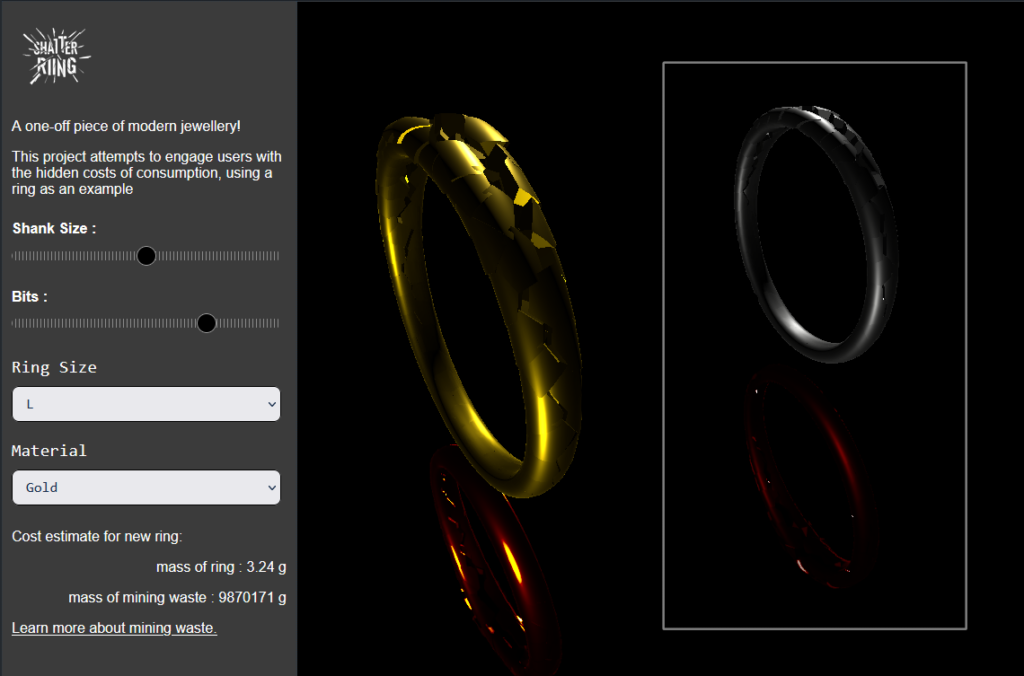
We have a metacrisis of over consumption that is driving us toward the precipice of extinction. Fuelled by relentless advertising and capitalism’s need for endless growth, humanity is literally devouring the planet. Consumers click to buy for next day delivery from the other side of the world, the environmental and social impacts are safely hidden from view. Climate change and biodiversity collapse continue unabated while governments pander to their corporate donors and provide illusory promises of green growth that are completely inadequate.
The Shatter-Ring project aims to engage users with these hidden costs of consumption, using a mock example of a ring that is shattered into bits and reassembled. The user is presented with what appears to be an interface to design their custom ring, with options to change the shank size, the number of bits and ring size and the material (gold, silver or titanium).

When the user clicks to obtain a cost estimate the scene quickly changes, the lights go out and the ring is mirrored with a fiery red reflection to represent the real costs of producing the ring. To the left the user is presented with the mass of material that would go into the ring and the mass of mining waste generated by producing the ring1, with a link to learn more about mining waste.

Compute

To generate the website the stack consists of html, javascript (Vue and THREE.js) and rhino.compute. The ring geometry is generated dynamically using a grasshopper script implemented with Hops inputs and outputs, rhino.compute processes the users inputs directly on the server. THREE.js is used to render the geometry and add material properties, lighting and camera controls. By keeping the material rendering in THREE.js the app is able to be more responsive.
Future Work
Taking the concept of the Shatter Ring to the construction industry is an attractive prospect, whereby building footprints can be calculated and the volumes of waste produced from a given construction project displayed on screen. One difficulty is that the volume of waste tends to be orders of magnitude greater than the object in question, requiring some thought about how to display the data on screen in a meaningful way.
- Rock-to-Metal Ratio: A Foundational Metric for Understanding Mine Wastes, Nedal T. Nassar, Graham W. Lederer, Jamie L. Brainard, Abraham J. Padilla, and Joseph D. Lessard, Environmental Science & Technology 2022 56 (10), 6710-6721 DOI: 10.1021/acs.est.1c07875 ↩︎

